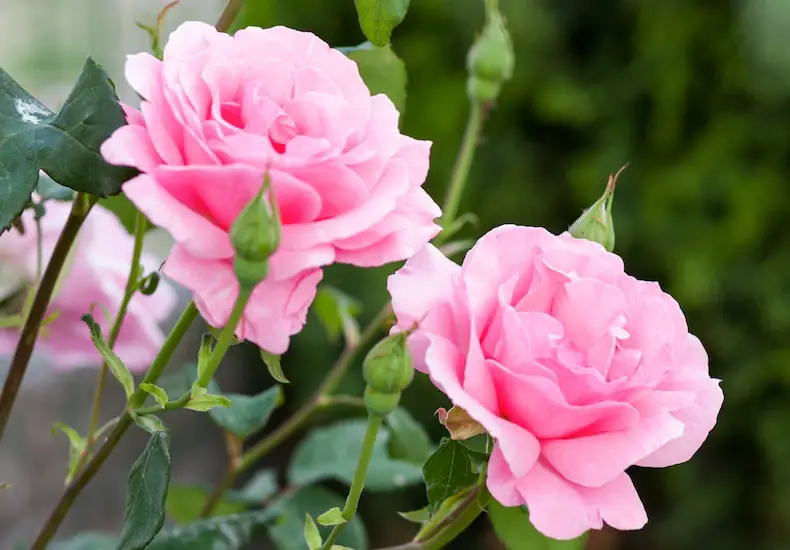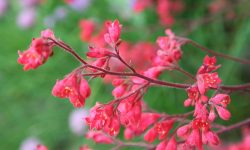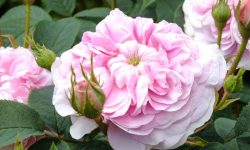Roses captivate with their stunning colors, delicate petals, and enchanting fragrance, making them a favorite in gardens and floral arrangements alike. Yet, the challenge lies in maintaining their beauty over time. Without proper care, roses can wilt quickly, losing their charm and vitality. Understanding the factors that influence rose longevity is essential for anyone who wants blooms to remain fresh and vibrant for days or even weeks.
From hydration and pruning to environmental conditions, every aspect of rose care affects how long they last. By following expert strategies and adopting mindful practices, gardeners and flower enthusiasts can significantly extend the life of their roses. This comprehensive guide offers practical tips and proven techniques to ensure that each rose maintains its elegance, fragrance, and overall health, allowing you to enjoy long-lasting, beautiful blooms.
Proper Watering and Hydration for Long-Lasting Roses

Watering is one of the most critical factors in keeping roses fresh and healthy. Roses require consistent moisture to support strong stems, vibrant blooms, and lush foliage. Inadequate watering can lead to wilting, weak petals, and reduced flower longevity. Gardeners should water deeply at the base of the plant rather than lightly over the surface, ensuring that the roots absorb enough moisture for sustained growth. Early morning watering is ideal, as it minimizes water loss through evaporation and reduces the risk of fungal diseases. Consistency is key, especially during hot or dry periods, to prevent stress that can weaken the plant and shorten the life of blooms.
Cut roses in vases also need proper hydration to last longer. Before arranging, trim the stems at an angle under running water to allow maximum water uptake. Replacing vase water every two days, along with trimming a small portion of the stems, helps prevent bacteria buildup that can shorten the lifespan of the flowers. Adding floral preservatives, or a simple mixture of sugar and vinegar, can further enhance water absorption, maintain petal freshness, and prevent leaves from yellowing too quickly. Proper handling during cutting and arranging is equally important to avoid air bubbles in stems, which block water flow.
Monitoring soil moisture is essential for both garden and cut roses. Overwatering can be just as harmful as underwatering, causing root rot and weakened plants. Using well-draining soil or adding mulch around garden roses helps retain moisture without waterlogging the roots. Regularly checking soil with a finger test or moisture meter ensures that roses receive the right amount of water. By providing consistent and proper hydration, gardeners can ensure that roses remain strong, vibrant, and long-lasting, creating stunning displays that brighten any space and maintain their beauty for days.
Optimal Sunlight and Temperature for Long-Lasting Roses
Adequate Sunlight for Healthy Roses
Roses thrive in sunlight, which is essential for photosynthesis, strong stems, and vibrant blooms. Inadequate light can lead to leggy growth, weak petals, and reduced flower longevity. Garden roses should ideally receive six to eight hours of direct sunlight daily. Morning sun is particularly beneficial, as it dries dew from leaves and helps prevent fungal diseases like black spot and powdery mildew. When planting roses, choose a location that provides ample sunlight throughout the day, avoiding areas shaded by large trees or structures. Providing consistent light exposure encourages buds to develop fully, resulting in larger, more colorful blooms that last longer.
For cut roses, light plays a subtler but still important role. While placed indoors, avoid harsh direct sunlight that can scorch petals or cause rapid fading. Indirect natural light helps maintain petal color, supports metabolic activity, and prolongs bloom life. Combining adequate sunlight with other care practices, like proper watering, temperature management, and gentle handling, ensures that roses remain healthy and resilient. By optimizing light conditions, gardeners can enjoy vibrant, long-lasting blooms both in gardens and in decorative arrangements, enhancing the overall beauty and lifespan of their roses.
Ideal Temperature Conditions for Longevity
Temperature plays a vital role in how long roses remain fresh and vibrant. Roses generally thrive in daytime temperatures between 65–75°F (18–24°C) and cooler nights around 55–60°F (13–16°C). Excessive heat accelerates water loss from leaves and petals, causing wilting, browning, and shorter bloom life. Conversely, frost or extreme cold can damage delicate buds, stunt growth, and reduce flowering. Gardeners should monitor local weather conditions and provide temporary shade, windbreaks, or protective covers during heatwaves or unexpected cold snaps to maintain optimal growth.
Indoor roses or cut flowers are also sensitive to temperature. Keeping vases away from direct heat sources like radiators, heaters, or sunny windows prevents premature petal wilting and water stress. Slightly cooler indoor temperatures slow the metabolism of flowers, helping petals retain moisture and structure for longer. When combined with proper sunlight, hydration, and careful handling, controlling temperature conditions ensures roses grow vigorously, bloom fully, and maintain their beauty. Optimizing temperature is essential for both garden roses and indoor arrangements to enjoy long-lasting, healthy blooms.
Pruning and Deadheading for Long-Lasting Roses
Proper Pruning Techniques for Healthy Growth
Pruning is essential to maintain strong, healthy rose plants and extend bloom life. Removing dead, diseased, or weak stems encourages better air circulation, reduces the risk of fungal infections, and directs the plant’s energy toward producing vibrant flowers. Pruning should be done carefully using clean, sharp tools to prevent damage and minimize stress. Gardeners should prune during early spring, just as buds begin to swell, to promote new growth and a balanced shape. Additionally, cutting at a 45-degree angle just above an outward-facing bud encourages outward growth, reducing overcrowding in the plant’s center and improving overall airflow. Properly timed pruning helps roses recover quickly, allowing more energy to be allocated toward new blooms rather than maintenance of damaged or overcrowded branches.
Strategic pruning also affects the longevity of blooms. Cutting spent flowers and thinning overcrowded stems allows light and nutrients to reach all parts of the plant, ensuring even development. Maintaining proper pruning habits encourages repeated flowering and prevents the plant from wasting energy on unhealthy growth. Regularly removing weak or crossing stems prevents rubbing wounds, which can invite disease and pest problems. By integrating careful pruning into routine rose care, gardeners can enjoy stronger stems, larger blooms, and longer-lasting roses throughout the growing season, keeping the garden vibrant and healthy.
Deadheading for Extended Blooming
Deadheading, or removing spent flowers, is a simple yet effective method to prolong rose flowering. By cutting off wilted blooms just above the first set of healthy leaves, the plant is stimulated to produce new buds rather than directing energy toward seed formation. This practice encourages continuous flowering and helps maintain the plant’s overall vigor, shape, and aesthetic appeal. Regular deadheading reduces the risk of disease by removing decaying petals that can harbor fungal spores, keeping the plant healthier over the growing season.
For cut roses, removing dying petals promptly prevents the spread of decay and helps preserve water and nutrient balance within the stem. Consistent deadheading ensures that the plant directs its energy into producing more robust flowers, resulting in larger, longer-lasting blooms. Combined with proper pruning and regular monitoring for pests and diseases, deadheading is an essential practice for gardeners and flower enthusiasts who want to maximize the beauty and lifespan of their roses. Incorporating this routine into rose care allows blooms to remain vibrant and fresh, extending the enjoyment of each flowering cycle.
Proper Fertilization for Longevity
Fertilizing roses correctly is essential to support strong growth, vibrant blooms, and long-lasting flowers. Garden roses require a balance of nutrients, including nitrogen for leaf growth, phosphorus for root development, and potassium for flower production. Applying a well-balanced fertilizer during the growing season helps maintain healthy foliage and ensures repeated flowering. Slow-release fertilizers are ideal because they provide a steady supply of nutrients without overwhelming the plant, reducing the risk of leaf burn or nutrient imbalances.
Timing is equally important. Fertilization should begin in early spring, just as new growth emerges, and continue at regular intervals throughout the blooming season. Avoid fertilizing in late fall or winter when the plant is dormant, as this can encourage tender growth that is vulnerable to frost damage. For container roses, liquid fertilizers applied every two to three weeks can supplement the limited nutrients in potting soil, ensuring that the plant receives consistent nourishment.
Organic options, such as compost, well-aged manure, or fish emulsion, also benefit roses by improving soil structure, promoting beneficial microbial activity, and providing nutrients naturally. Combining organic matter with standard fertilizers enhances soil fertility and moisture retention, creating an optimal environment for healthy root systems. By understanding nutrient needs, choosing the right type of fertilizer, and applying it at the correct time, gardeners can support strong, resilient plants and ensure that roses bloom beautifully and last longer, enhancing both garden aesthetics and cut flower longevity.
Protecting Roses from Pests and Diseases
Identifying Common Rose Pests
Roses are susceptible to a variety of pests, including aphids, spider mites, thrips, and caterpillars. Early identification is critical to prevent serious damage and preserve plant vigor. Gardeners should regularly inspect leaves, stems, and buds for signs of infestation, such as discolored or curled leaves, sticky residue, holes, or visible insects. Detecting pests early allows for targeted interventions, reducing stress on the plant, maintaining bloom quality, and preventing infestations from spreading to neighboring plants.
Preventive and cultural measures are equally important. Encouraging beneficial insects like ladybugs, lacewings, and predatory mites helps naturally control pest populations without relying on harsh chemical treatments. Maintaining clean garden conditions, removing fallen debris, and spacing plants for optimal airflow discourages pest establishment. Additionally, avoiding over-fertilization prevents excessive tender growth, which often attracts aphids. By combining vigilance, preventive strategies, and careful observation, gardeners can minimize pest impact, protect the health of their roses, and ensure that plants remain strong, vibrant, and capable of producing abundant, long-lasting blooms throughout the growing season.
Managing Diseases and Treatment Options
Roses are prone to several diseases, including black spot, powdery mildew, rust, and botrytis blight. Early detection is essential for effective management and long-lasting blooms. Gardeners should inspect foliage and stems regularly for unusual spots, discoloration, or fuzzy fungal growth. Removing infected leaves promptly and disposing of them away from the garden prevents spores from spreading. Applying appropriate fungicides at the first sign of infection can help control disease progression without damaging healthy tissue.
Cultural practices significantly reduce disease risks. Proper plant spacing ensures good airflow, while mulching prevents soil splash that can carry pathogens to leaves. Watering at the base of the plant rather than overhead reduces humidity on foliage, minimizing fungal growth. Selecting disease-resistant rose varieties provides an additional layer of protection. Combined with consistent monitoring and timely intervention, these strategies help maintain plant vigor, prevent infection escalation, and ensure that roses remain vibrant, healthy, and capable of producing abundant, long-lasting flowers both in the garden and as cut arrangements.
Seasonal Care for Long-Lasting Roses
Spring Care for Roses
Spring marks the beginning of active growth for roses. As temperatures rise, plants emerge from dormancy and produce new shoots and leaves. Gardeners should prune dead, weak, or crossing stems, remove debris around the base, and inspect for winter damage or frost injuries. Applying a balanced, slow-release fertilizer at this stage supports vigorous growth and prepares plants for a healthy flowering season. Light pruning also helps shape the plant and encourages strong, well-spaced shoots that will produce robust blooms throughout the spring and summer.
Consistent watering is essential, particularly during dry spells, to maintain evenly moist soil and prevent stress. Mulching around the base helps conserve moisture, suppress weeds, and regulate soil temperature, protecting tender roots from sudden fluctuations. Monitoring for early pest activity, such as aphids, spider mites, or fungal signs, allows prompt intervention and prevents infestations from spreading. Incorporating these spring care practices ensures roses establish a solid foundation for healthy development, promotes strong stems, encourages abundant blooms, and sets the stage for a vibrant, long-lasting garden display throughout the growing season.
Summer Care for Roses
Summer is a critical period for roses, as high temperatures and intense sunlight can stress plants and affect bloom longevity. Gardeners should water deeply in the morning, ensuring soil stays consistently moist without waterlogging, which can cause root rot. Mulching helps retain soil moisture, keeps roots cool, and prevents weeds from competing for nutrients. Light pruning of spent blooms encourages new flower production and prevents the plant from wasting energy on seed formation.
Regular monitoring for pests and diseases is essential during summer. Aphids, spider mites, and fungal infections like powdery mildew can spread quickly under warm conditions. Removing infected leaves, spraying with organic treatments, or introducing beneficial insects can help control infestations. Additionally, providing temporary shade during heatwaves protects delicate petals and foliage from scorching. Proper summer care ensures roses maintain strong stems, vibrant blooms, and overall plant health, allowing flowers to last longer and keeping your garden visually stunning throughout the season.
Autumn Care for Roses
Autumn is a transitional period when roses start preparing for dormancy. Gardeners should gradually reduce fertilization to prevent new tender growth, which can be vulnerable to frost damage. Removing fallen leaves, spent blooms, and debris around the base helps prevent disease, reduces pest habitats, and maintains garden hygiene. Light pruning can be done to shape the plant and remove weak or crossing stems, but heavy pruning should be avoided, as it may stress the plant before winter and reduce its ability to survive colder months.
Watering should remain consistent but slightly reduced, ensuring soil does not dry out completely while preventing waterlogging. Applying a thick layer of mulch around the base protects roots from sudden temperature fluctuations, retains soil moisture, and insulates the plant. Inspecting plants for late-season pest activity or disease signs allows timely intervention before winter dormancy. Additionally, gardeners in colder climates may begin planning protective coverings or insulation strategies to shield roses from extreme frost. Proper autumn care ensures roses enter winter healthy and resilient, enabling them to emerge vigorously in spring and continue producing strong, vibrant, and long-lasting blooms throughout the growing season.
Winter Care for Roses
Winter care focuses on protecting roses from cold temperatures, frost, and harsh winds. In colder regions, gardeners should apply a thick layer of mulch, straw, or leaves around the base of the plants to insulate roots and maintain soil warmth. Container-grown roses may need to be moved indoors or placed in a sheltered location to prevent freezing. Avoid pruning during winter, as cutting can stimulate new growth that is highly vulnerable to frost damage. Proper winter preparation ensures that roses survive dormancy and are ready for strong spring growth.
Monitoring soil moisture is also important, as winter winds and dry air can dehydrate plants even in dormant stages. Water sparingly during mild periods, ensuring the soil remains slightly damp but not saturated. Inspect the plants periodically for signs of rodent damage or winter stress, and provide protective coverings if extreme weather is forecasted. By combining insulation, careful watering, and protection from environmental stressors, roses remain healthy through the winter months. This preparation maximizes their resilience, allowing them to emerge vigorous, produce abundant blooms, and maintain long-lasting beauty throughout the growing season.
Common Mistakes to Avoid When Caring for Roses
Overwatering or Underwatering Roses
One of the most frequent mistakes gardeners make is improper watering. Overwatering can lead to root rot, fungal infections, and nutrient leaching, while underwatering may cause dehydration, wilting, and poor flower development. Maintaining consistent soil moisture is essential for strong roots and long-lasting blooms. Gardeners should check soil regularly and adjust watering according to weather conditions and soil type.
Using well-draining soil prevents water from pooling around the roots, reducing the risk of rot. Mulching helps retain moisture while regulating soil temperature. For container roses, proper drainage holes are crucial to prevent excess water accumulation. By avoiding extremes in watering and monitoring plant response, gardeners ensure roses remain healthy, vibrant, and capable of producing abundant, long-lasting blooms throughout the growing season.
Neglecting Pruning and Pest Management
Neglecting regular pruning can result in weak, overcrowded stems and reduced flower production. Dead or diseased branches may harbor pests or fungal infections, spreading disease throughout the plant. Proper pruning strengthens stems, improves air circulation, and directs energy toward bloom development. Gardeners should use clean, sharp tools to minimize stress and cut back spent flowers to encourage continuous blooming.
Ignoring early signs of pests such as aphids, spider mites, or fungal diseases can lead to rapid infestations and damage. Regular inspections, combined with preventive measures like introducing beneficial insects or applying organic treatments, are key to maintaining plant health. By integrating consistent pruning and vigilant pest management, gardeners can avoid common mistakes, ensuring roses thrive, remain strong, and produce beautiful, long-lasting blooms year after year.
Choosing the Right Rose Varieties for Longevity
Selecting the appropriate rose variety is essential for long-lasting blooms. Not all roses have the same durability, whether in the garden or as cut flowers. Hybrid tea roses and floribunda varieties are known for their thick petals and extended bloom life. Choosing these robust types ensures that flowers maintain their color and shape for longer periods, providing beauty and fragrance consistently. Gardeners should also consider disease resistance, as healthy plants naturally produce longer-lasting flowers with less stress.
Local climate and soil conditions play a significant role in rose longevity. Selecting varieties suited to the regional environment helps reduce transplant shock and improves overall plant resilience. Roses that thrive in their preferred conditions are less likely to succumb to stress, pests, or diseases, ensuring continuous flowering. By understanding the specific needs and strengths of each variety, gardeners can plan their garden for maximum visual impact and prolonged bloom duration throughout the growing season.
Additionally, combining multiple varieties can enhance both aesthetic appeal and bloom longevity. Mixing early, mid, and late-season bloomers ensures that your garden maintains color and fragrance across the entire growing period. When planning for cut flowers, choosing varieties that maintain structural integrity after cutting will also extend vase life. Ultimately, selecting the right rose varieties is a strategic step that supports both garden beauty and long-lasting enjoyment of your roses.
Using Protective Measures for Cut Roses
Proper care after cutting is crucial for maximizing rose longevity. Freshly cut roses should be placed in clean water immediately. Cutting stems at a diagonal increases water absorption and reduces the risk of air pockets, which can shorten bloom life. Adding commercial flower preservatives or a mixture of sugar and a few drops of bleach to the water helps maintain petal firmness, color, and freshness. Regularly changing the water every two to three days further prevents bacterial growth that can damage stems and leaves.
Environmental conditions play an equally important role in maintaining cut rose longevity. Avoid placing flowers in direct sunlight or near heat sources, as excessive light or temperature fluctuations accelerate wilting. Similarly, keeping roses away from drafts, fans, or air conditioners prevents uneven drying and petal damage. Maintaining a stable, cool temperature slows metabolism, preserving petals and fragrance.
Handling is another critical factor for longevity. Gentle placement of blooms in vases, avoiding overcrowding, and removing wilted leaves or petals prevents premature decay. By combining careful handling, optimal hydration, and controlled environmental conditions, gardeners and florists can significantly extend the vase life of roses. These protective measures ensure that cut flowers remain vibrant, fragrant, and elegant for days, allowing full enjoyment of their beauty indoors.
FAQ About Keeping Roses Last Longer
What is the best way to water roses for long-lasting blooms?
Roses should be watered deeply and consistently, keeping soil evenly moist but not waterlogged. Early morning watering allows leaves to dry, reducing fungal risk. Adjust frequency based on weather and soil type to maintain strong roots and vibrant, long-lasting flowers.
How often should I prune my roses?
Prune in early spring to remove dead, diseased, or weak stems. Lightly prune spent blooms during the season to encourage continuous flowering. Regular pruning improves air circulation, strengthens stems, and helps roses produce larger, healthier, and longer-lasting blooms.
How can I prevent common rose pests?
Inspect roses regularly for aphids, spider mites, and other pests. Introduce beneficial insects, maintain garden cleanliness, and apply organic treatments like neem oil. Early intervention minimizes damage, preserves bloom quality, and keeps plants healthy throughout the growing season.
What role does sunlight play in rose longevity?
Roses need six to eight hours of sunlight daily for strong stems, vibrant petals, and healthy growth. Morning sun helps prevent fungal diseases. For indoor roses, indirect natural light maintains metabolic activity and prolongs bloom life.
How does fertilization affect rose blooms?
Balanced fertilization provides essential nutrients for growth and flower development. Timing is key; apply fertilizer during active growth stages and avoid over-fertilizing stressed or newly transplanted plants. Proper nutrition ensures long-lasting, vigorous, and abundant blooms.
Conclusion
Proper care is the key to enjoying roses that remain vibrant and beautiful for extended periods. By providing adequate sunlight, consistent watering, regular pruning, and timely fertilization, gardeners create optimal conditions for strong stems and long-lasting blooms. Vigilant pest and disease management further ensures plant health and flower longevity. Whether in the garden or as cut arrangements, attention to these details allows roses to thrive, offering continuous color, fragrance, and elegance. With patience and dedication, you can maximize bloom life and enjoy the unmatched beauty of healthy roses year after year.






